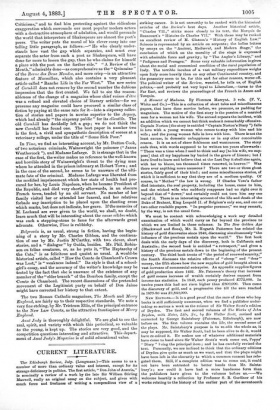We must be content with acknowledging a work any detailed
examination of which would carry us far beyond the province to which we are limited in these columns. In The New Golden Age (Blackwood and Sons), Mr. R. Hogarth Patterson has related the history of gold discoveries since 1848, discussing simultaneously "the influence of the precious metals upon the world." The first book deals with the early days of the discovery, both in California and Australia ; the second book is entitled " a retrospect," and gives a history of the precious metals down to the beginning of the present century. The third book treats of " the period of renewed scarcity," the fourth discusses the relative effects of "cheap" and "dear" money, the fifth shows how the now supplies of gold brought about a vast increase of commercial enterprise. An appendix supplies figures of gold production since 1492. Mr. Paterson's theory that increase of gold means increase of wealth certainly derives support from income-tax statistics. In 1842, each penny produced £772,000. In twelve years this had not risen higher than £809,000. Then came the discovery of gold, and a progressive rise till the sum reached in 1879-80 was £1,840,000.


































 Previous page
Previous page